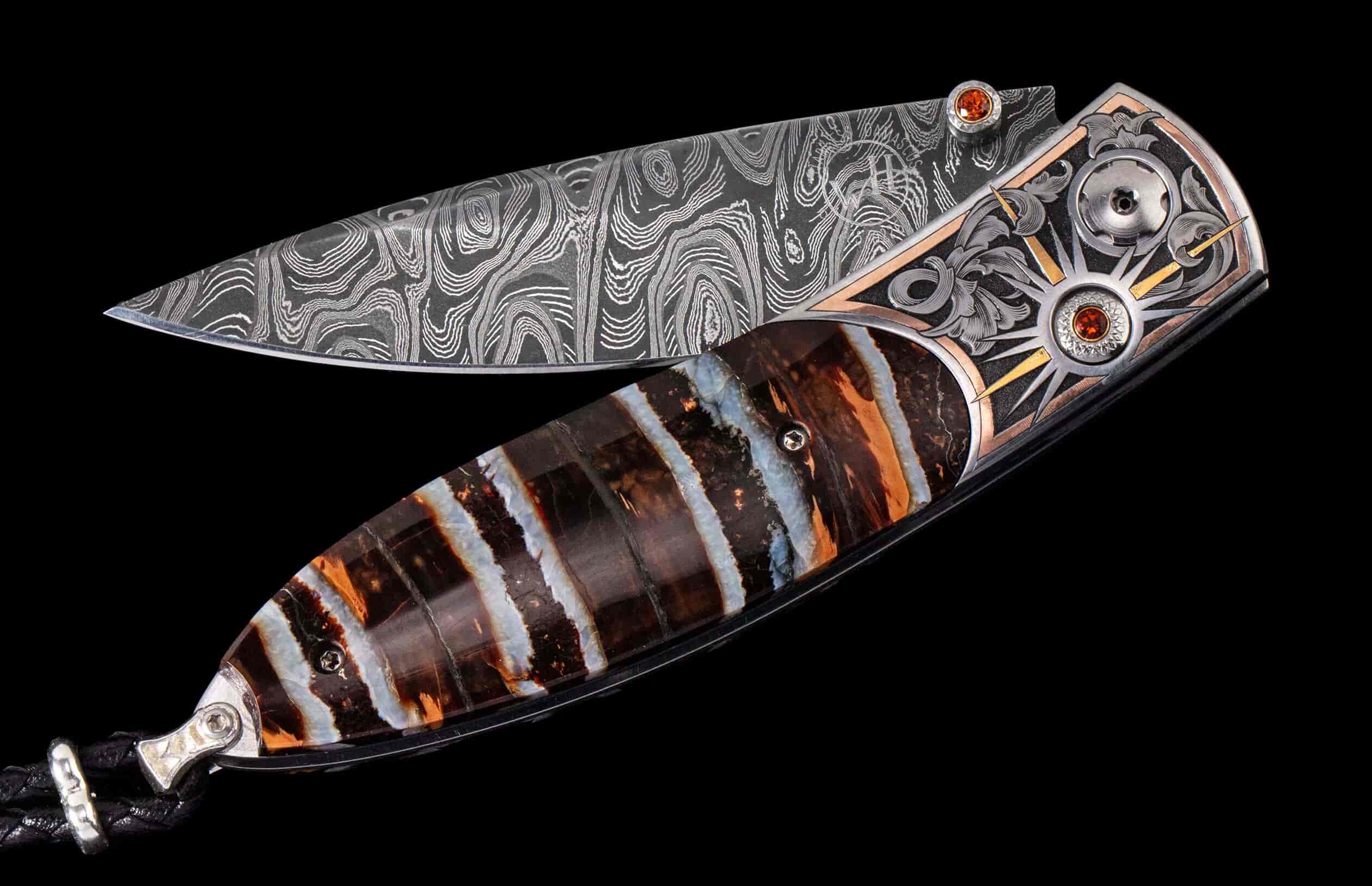Product Details
The Monarch 'Kristoff' features a beautiful hand-engraved stainless frame with 18K & 24K gold inlays by Kristof Som, inlaid with 10,000 year-old fossil Woolly Mammoth tooth. The blade is hand-forged 'Hornets Nest' damascus by Mike Norris; the button lock and thumb stud are set with citrine gemstones. The Monarch is a simple design that is easy on the eye and effortless in the hand; the elegant shape of the handle on this design is also an ideal canvas to showcase fine hand-engraving or exotic materials. The 'Kristoff' is a stunning piece; a rich and unique synthesis of the elegance, function, and superlative artistry that are the hallmark of William Henry's work.
Product SKU: B05 KRISTOFF
Features & Specs
One-hand button lock system
Leather carrying case
Shipped in an elegant wood presentation box
Dimensions:
- Blade 2.63" (66.8mm)
- Handle 3.58" (90.9mm)
- Overall open 6.00" (152.4mm)




